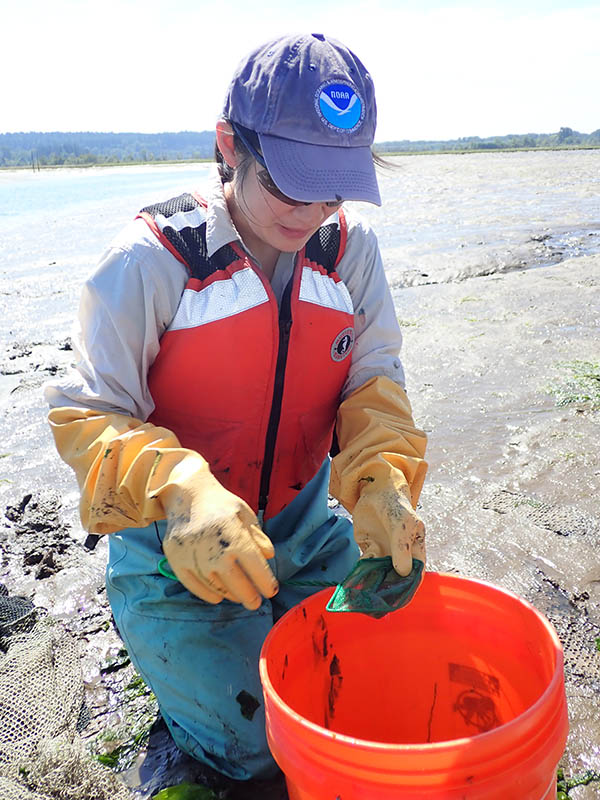NOAA Scientists Bring Home Almost 700 Juvenile Flatfish for Lower Duwamish Damage Assessment in Washington
AUGUST 16, 2021 ─ Contaminant loads in the fish will be evaluated through chemical analysis and their otoliths will be examined to quantify recent growth rates. Beach seines using a NOAA research vessel and pulled to shore by hand to sort through each catch.

The goal was to collect 10 juvenile fish of the same species from a total of 45 locations within eight geographic areas of the Lower Duwamish River, plus the Nisqually River area. At least nine starry flounder were caught at 38 of the 45 locations, a remarkable success rate. English sole were collected at six locations, which will allow the team to compare contaminant levels between the two species and evaluate the relationship between contamination and growth in the critical first year of the life of flatfish.
This work was completed through a partnership between OR&R, the NOAA Fisheries Northwest Fisheries Science Center; and the NOAA Fisheries Restoration Center. Implementing field work always requires a significant level of effort in sample design, planning, permitting, boat operations, net pulling, field handling and identification of fish, field data documentation, logistics, and data intake. In addition, the team managed an extra layer of complexity to address NOAA's COVID protocols.
For more information contact Marla.Steinhoff@noaa.gov or Mary.Baker@noaa.gov.
